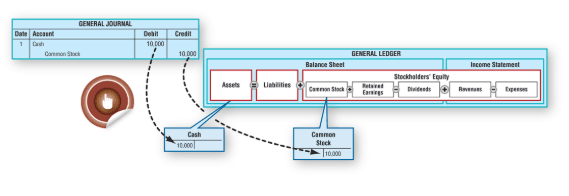
It focuses on net income, so it is especially helpful if you need to make an assessment that is based on your business’s bottom line. If your business is looking to apply for a loan or attract new investment, a multi-step income statement is the best option multi step income statement as it provides investors and creditors with greater financial detail about your business. The process of preparing a multi step income statement entails the following steps in order to present a clear picture of the financial position of the business. A multi step income statement can be highly useful for many businesses, especially those that are larger in scale and have some complexity in their bookkeeping.
- It helps them make strategic financial decisions, reduce costs, and enhance the overall profit of their business.
- By providing a detailed breakdown of revenue and expenses, a multi-step income statement helps analysts assess financial ratios.
- Operating revenues are the revenues that an entity generates from its normal business activities.
- These problems highlight the challenges of using a multi-step income statement, particularly for smaller businesses or those in service industries.
- Every half-yearly to present the company’s different revenues and expenses during the period of half-year to present a financial picture of the company.
Gross Profit Margin
It’s a simple equation where you subtract the total expenses from the total revenue to find the net income. A financial analyst also uses these models to predict future earnings and how various decisions may impact the overall profits of the business. It assists investors and managers in How to Run Payroll for Restaurants making better decisions on where to invest, how to finance it, and how to efficiently operate the business. These models are also used to estimate the valuation of a business and to compare it to others in the same industry. You can either present a (1) single-step income statement, or (2) multi-step income statement.
Gross Profit Calculation

It breaks down expenses and revenues that are directly related to the business’s operations versus those that aren’t. It shows the progression from sales revenue to net income by separating operating and non-operating activities. With a single step statement, all the financial elements—revenues, expenses, gains, and losses—are combined into one comprehensive overview without contribution margin any further categorization. Selling, General, and Administrative Expenses (SG&A) represent the major operating expenses that a company incurs. They are grouped together because they are all related to the day-to-day running of the business, excluding the direct costs of production (COGS).
We and our partners process data to provide:

Expense line items, such as selling expenses and administrative expenses, are detailed, making it possible to gauge operations effectively. The multi-step income statement may seem a bit intimidating at first, but it really is a useful topic to explore. To prepare a multi-step income statement, you must first calculate the gross profit by subtracting the cost of goods sold from the revenue. You must then calculate the operating income by subtracting all of the expenses from the gross profit.

Throughout this series on financial statements, you can download the Excel template below for free to see how Bob’s Donut Shoppe uses the multi-step income statement (and others) to evaluate the performance of his business. They are including interest income, interest expenses, gain or loss on exchange different, gain or loss on revaluation, and other non-operating expenses. This template is very useful to users of financial statements because it could tell them how much the reporting entity could generate profit from its operating activities.


